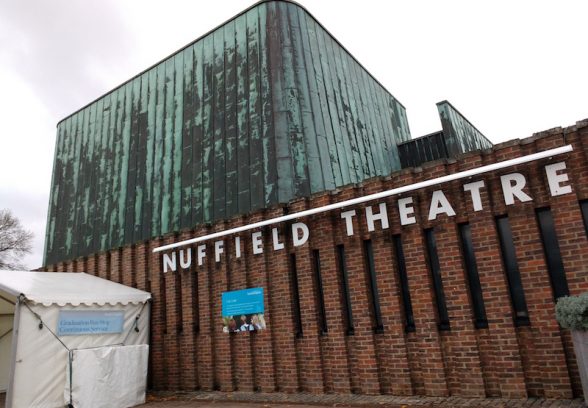This website uses cookies
This website uses cookies to enable it to function properly and to analyse how the website is used. Please click 'Close' to accept and continue using the website.



Following a successful AGM for the Southern Regional Group on 12 December, we braced the cold, windy elements for an informal walking tour of Southampton University’s Highfield Campus to appreciate some of the diverse architectural styles on site.
In particular, we admired some of the traditional redbrick buildings designed by Gutteridge and Gutteridge in the 1930s, notably the Hartley Library (designed in association with Sir Giles Gilbert Scott) incorporating original 1914 wings, with doorways that Pevsner says have a Voysey or even Mackintosh feel to them.
We then focused on the plethora of buildings designed by Sir Basil Spence in the 1960s. His buildings used mainly concrete and glass, wrapped in mosaic and in some cases copper cladding for the roof, most in evidence with the 1964 Nuffield Theatre and Arts complex.
Spence’s striking 10-storey 1963 Faraday tower for Electrical and Civil Engineering was even included in a commemorative postage stamp in 1970. Its connecting bridge to the other buildings for the Engineering faculty has been demolished and the main building is standing empty – could this be at risk? We admired the striking concrete clad protruding lecture theatre of the Lanchester building (1959).
Since Spence’s time, the campus has become the home to further innovative architecture. In 1996 a new masterplan was implemented by Rick Mather to ‘redress the image from urban sprawl to a cohesive and attractive environment’, including a tree-lined boulevard. As we walked around we appreciated some of the green landscaped areas and sculptures (including several by Barbara Hepworth) that create a more harmonious working environment.
Our attention was drawn to two award-winning structures. Firstly, the 2010 Life Sciences Building by NBBJ which won a RIBA award in 2011, judged as ‘active at every level, well lit, intriguing perspectives, good environmentally and acoustically’. Secondly, the recent Transport Interchange, with bus links to the town centre, station and airport. This was showcased in 2011 by RIBA as a ‘small project delivering high impact’.
All in all this was an interesting tour, whetting the appetite for further personal research of buildings of interest (especially as currently no buildings are listed on the site) and for discovering the delights of other university campuses. Our thanks go to Adam Smith and Pauline Mousley for organising the itinerary.

Become a C20 member today and help save our modern design heritage.